
You can see why they named this small fungus so. It has a delightful Latin name Xylaria hypoxylon. It is also named Candlesnuff Fungus as it generally blackens.

This is an irregular resupinate fungus forming large spreading patches which is tightly attached to the substrate with waxy flesh which turns dark brown when dry and becomes brittle. I have shown close views in the first two images to show the fascinating structure of this fungi.

It is uncommon, and it is usually found on the the underside of fallen logs and branches of deciduous trees.


The Clustered Bonnet (Mycena inclinata) discovered on a rotting tree stump. Despite the potential lighting difficulties of photographing fungi … at least they don’t try and run away, and they don’t hardly move in the wind … I don’t really like to use flash on mushrooms as I much prefer the natural light. In manual mode, which is my preference, I may have to up the ISO a little which sometimes can risk noise creeping into the image, or drop down on the shutter speed, which may introduce camera shake hand held. Altering the aperture to suit the best situation also helps.Like all things in photography the challenge is to take control of the available light, and to find balance somewhere in between.

Not Ghostbusters slime … but Mycetozoa – slime moulds, more discovered this time in local woods. This species looks to be the same as in the previous post Trichia botrytis. Like all slime moulds, they creep across a surface very slowly devouring food until they run out, and when they run out they will release their spores.

These appear to be in the early stages of ripening. Each Sporocarp – the bright fruiting bodies you see – are around 5 mm (1/4 in) tall and 0.8 mm (3/64 in) in diameter, so they can be easily missed out in the field unless you keep an eye out for them. These were found on the underside of fallen bark on the ground.

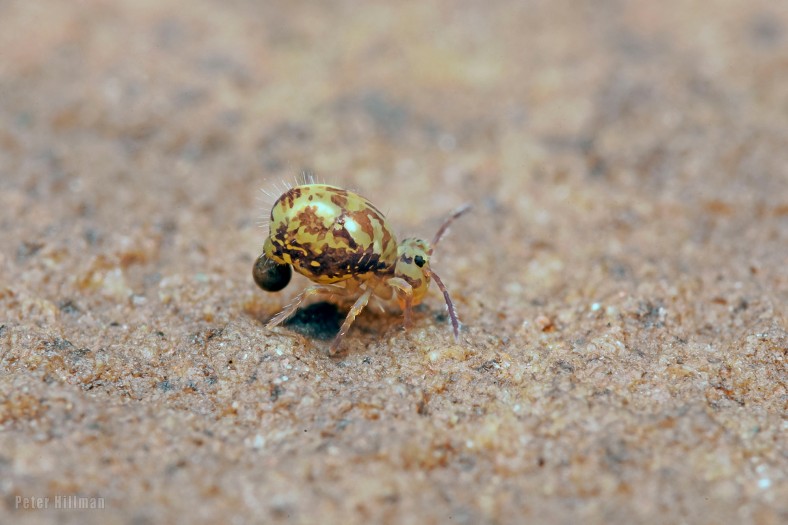
This is Dicyrtomina saundersi, a springtail, and boy do they jump if they feel threatened. This is an uncropped image. I have experimented with extension tubes for the first time ever this morning, and have found using the 36 mm tube in combination with my Raynox 250 they work pretty well. Normally I would have had to crop the image some to get closer.
The original image was 6000 x 4000 pixels but I have reduced it down to 2000 x 1333 pixels for internet use and have reduced the quality a little to bring down the file size.
Oh, and yes, I probably snapped this individual at an inopportune moment … but there you go in the world of photography.
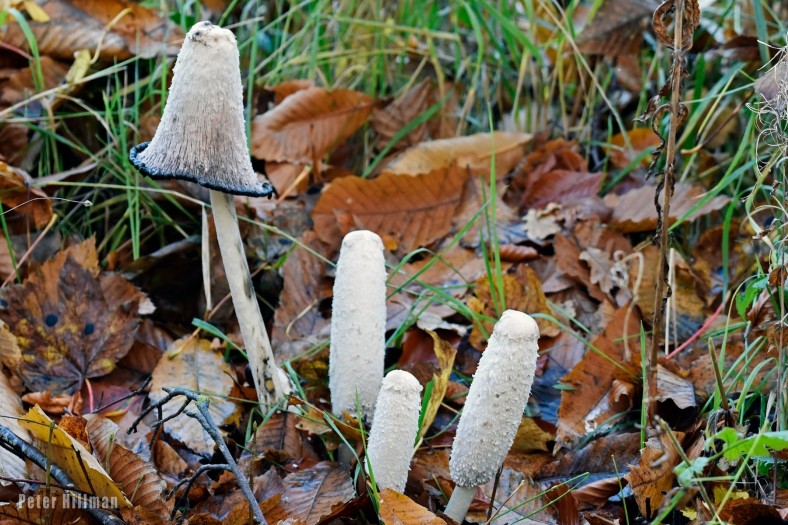
Also called the Lawyer’s Wig, this can be quite a large and impressive mushroom with a tall cap. When it opens up the cap and white gills gradually blacken and dissolve into black ink from the edge upwards to release its spores. Eventually the cap will melt away completely until only the stem remains.

Seen late summer to autumn, it is found solitary or in groups on grass, soil, and waste areas, especially where the ground has been disturbed.

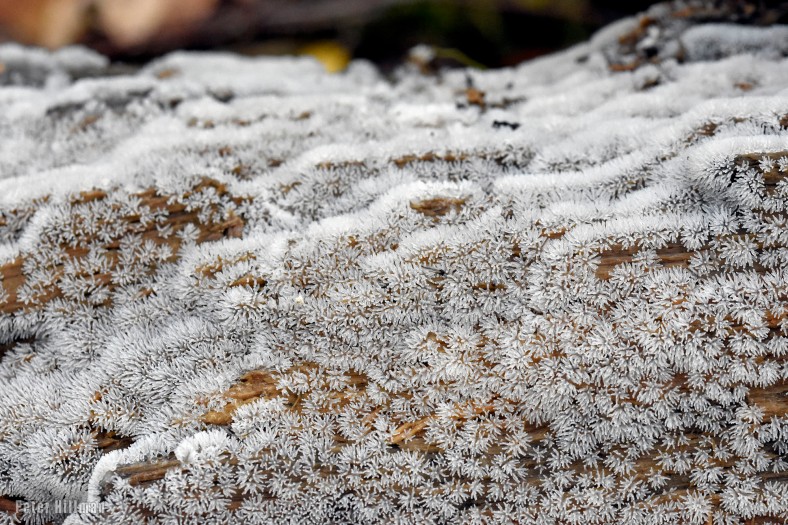
Whilst initially looking like ice crystals or coral, it is actually a slime mould – which is not a fungi but belongs to the kingdom Protozoa – single-celled organisms.

This colony was found covering a large area of a fallen and decaying tree trunk.
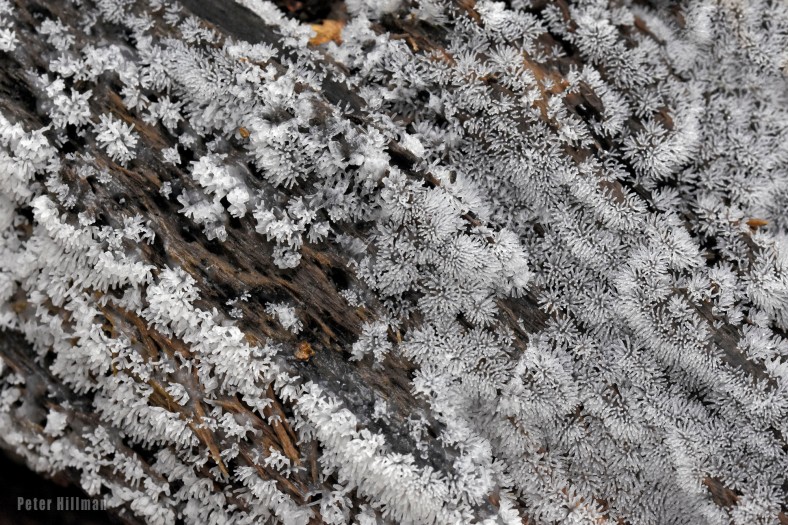
Although many slime mold species fruit on wood they do not form a penetrating and absorptive mass of hyphae in the wood substrate, but form structures called plasmodia which are naked (without cell walls) masses of protoplasm which can move and engulf particles of food in an amoeboid manner. Slime mold plasmodia creep about over the surfaces of materials, engulfing bacteria, spores of fungi and plants, protozoa, and particles of nonliving organic matter. At some point, plasmodia convert into spore-bearing structures.
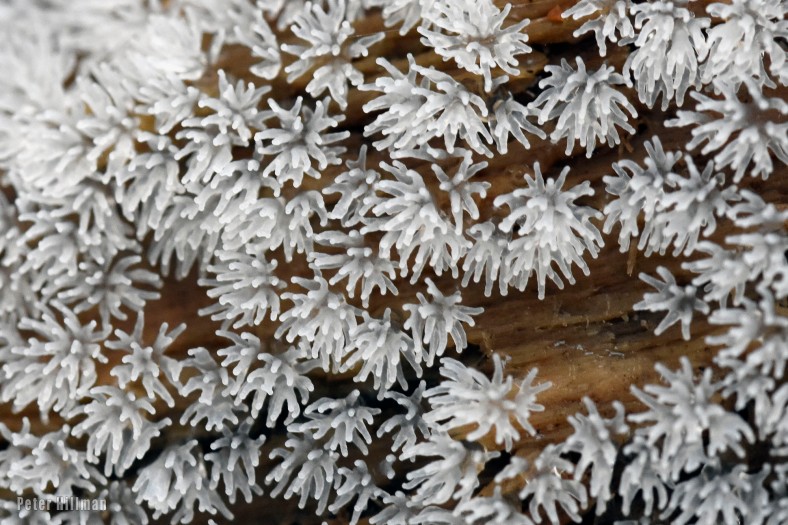
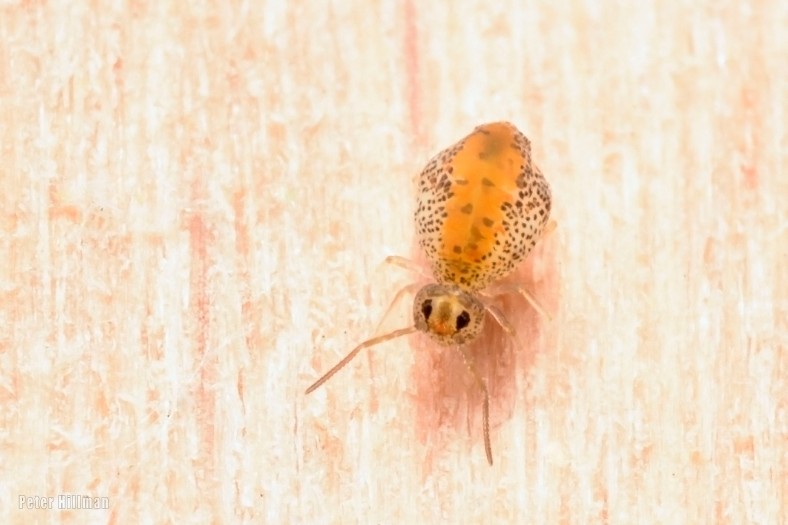
You may be wondering what an earth this blog title means? Well, coincidently for me, this is another of those species which has yet to be given a proper name!

This is a globular springtail of around 1.5-2 mm (around 5/64 in). It has to be the prettiest and perhaps the cutest I have seen, and has now become my favourite.

It is believed to have been imported from Australasia and associated with the horticultural trade. That is all the information I have been able to gain so far regarding its origin. There is no knowing its status here in the UK, either.

It appears to be fairly variable, and is seen in gardens and parks, and probably allotments and garden centres. I believe the bottom image may be a juvenile as it was smaller than the individuals above.
